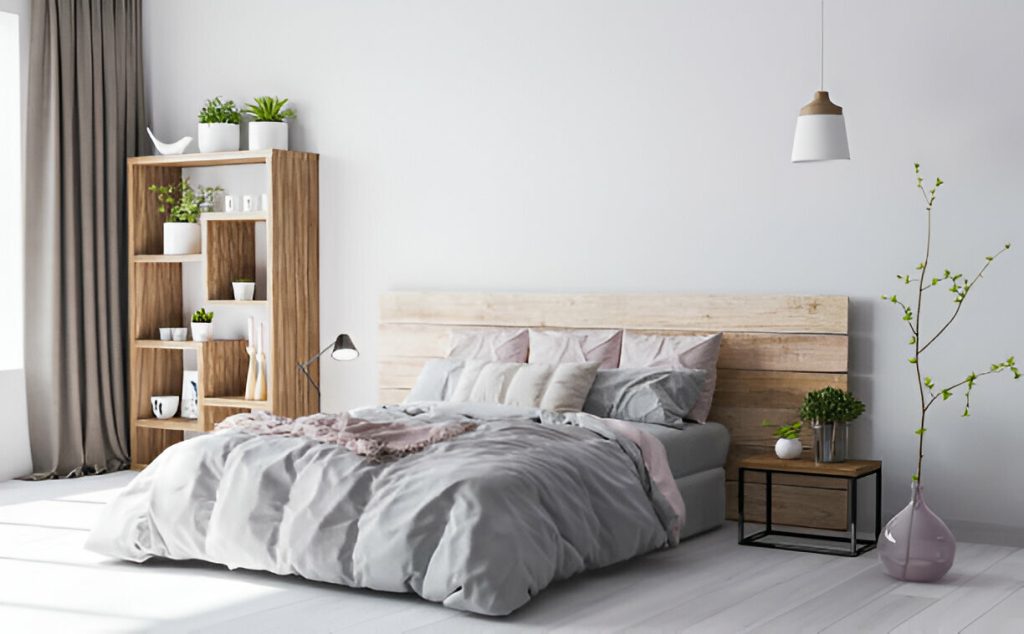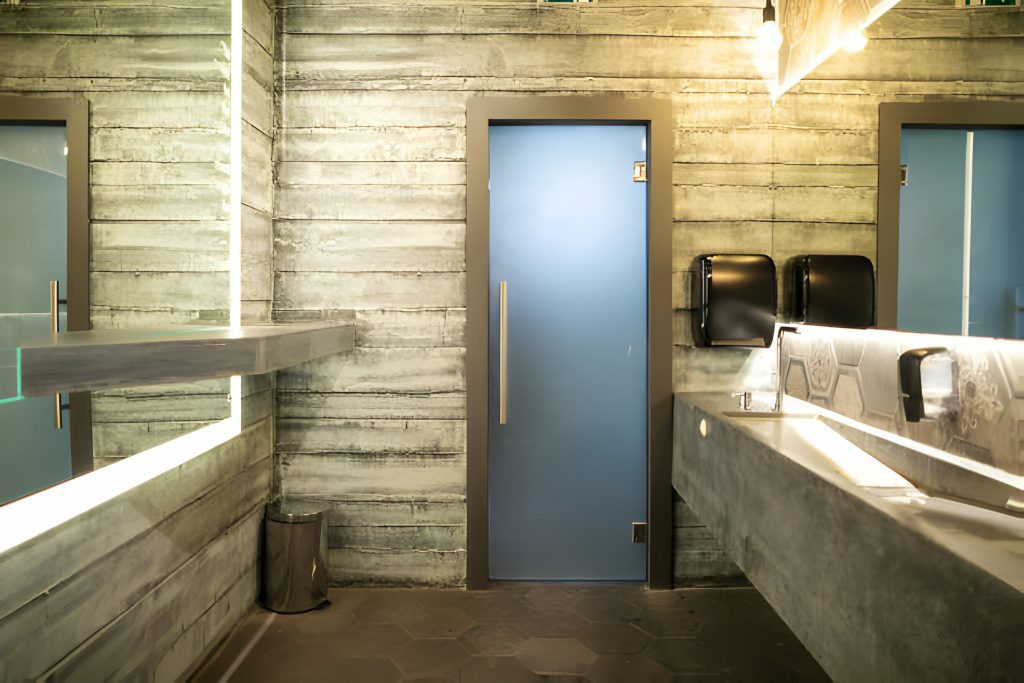Are you tired of squeezing through narrow bathroom doors that make you feel like a contortionist? Well, fear not! In this article, we’re here to tackle the burning question: “What size are bathroom doors?” Get ready to discover the standard sizes based on building codes, the variability in widths, and even tips for measuring and installing. So sit back, relax, and let’s embark on a journey to find the perfect-sized door for your bathroom oasis.
Standard Bathroom Door Sizes Based on Building Codes
The standard bathroom door sizes can vary based on building codes in different states and municipalities. There is variability in door heights, but the most common height for a bathroom door is 80 inches. The importance of door width should not be overlooked, as it plays a crucial role in accessibility and usability. When measuring the clear door opening, make sure to measure from the inside of the door to the other side of the opening. It’s also important to choose the right door material that can withstand moisture and humidity commonly found in bathrooms. Additionally, follow installation tips for bathroom doors such as ensuring proper alignment and using sturdy hinges for durability.
Variability in Bathroom Door Widths
There is variability in the width of bathroom doors, ranging from 24′ to 36′ wide. When choosing a bathroom door, there are several factors to consider. Here are some important points to keep in mind:
- Measuring techniques: Accurate measurements are crucial for selecting the right door size.
- Door frame considerations: Ensure that the door frame can accommodate the chosen width.
- Door swing options: Decide whether you want an inward or outward swinging door based on your space and preference.
- Hardware compatibility: Make sure the hardware you choose, such as hinges and handles, is compatible with the selected door size.
- Soundproofing options: If privacy and noise reduction are important to you, consider soundproofing materials for your bathroom door.
Considering these factors will help you find a bathroom door that not only fits perfectly but also meets your functional and aesthetic requirements.
Common Bathroom Door Sizes
When choosing a door for your bathroom, you should consider the common sizes such as 30′ x 80′, 24′ x 80′, 36′ x 80′, and 28′ x 80′. These sizes are widely available and can fit most bathroom entrances. To help you make an informed decision, here is a table outlining the common bathroom door sizes:
| Size | Width | Height |
|---|---|---|
| 30″ x 80″ | 30″ | 80″ |
| 24″ x 80″ | 24″ | 80″ |
| 36″ x 80″ | 36″ | 80″ |
| 28″x80″ | 28″ | 80″ |
When it comes to measuring techniques, ensure you measure the clear opening from inside the door to the other side of the opening. Consider door hardware options that suit your style and functionality needs. Door materials like wood or fiberglass offer durability and aesthetics. Installation tips include hiring a professional for precise fitting and proper alignment. Lastly, explore customization options such as adding frosted glass or decorative panels to enhance your bathroom’s overall design.
Smallest Allowable Bathroom Door Size
Consider measuring the clear opening of your doorway to determine the smallest allowable width for your bathroom door. Proper door measurements are crucial for a successful installation and functionality of your bathroom door. Here are some tips to help you with installing bathroom doors:
- Importance of proper door measurements:
- Accurate measurements ensure that the door fits perfectly in the doorway, preventing any gaps or issues.
- Proper measurements also ensure accessibility for everyone, including wheelchair users.
- Common mistakes in bathroom door installation:
- Not measuring the clear opening accurately can lead to incorrect sizing and difficulties during installation.
- Choosing the wrong door material can result in durability issues or lack of privacy.
- Maximizing space with pocket doors:
- Pocket doors are a great option when you have limited space in your bathroom.
- They slide into a wall cavity, saving valuable floor space and creating a more open feel.
Building Codes and Regulations for Bathroom Doors
To ensure compliance with building codes and regulations, you should consult the IRC or search online for your municipality’s specific requirements regarding your bathroom door. Building codes and safety regulations dictate the dimensions and accessibility requirements for bathroom doors. These codes are in place to ensure that bathrooms are designed in a way that promotes safety and accessibility for all individuals. When it comes to door dimensions, there is variability based on local building codes. The most common size for a bathroom door is 32 inches wide by 80 inches tall. However, other common sizes include 30 inches by 80 inches, 24 inches by 80 inches, 36 inches by 80 inches, and 28 inches by 80 inches. It is important to consider these standards when designing or remodeling your bathroom to ensure that it meets the necessary requirements for functionality and safety.
Bathroom Door Sizes for Wheelchair Accessibility
Installing a sliding door can provide a smoother experience for wheelchair users. It’s important to consider the specific needs of individuals with disabilities when choosing bathroom door sizes and features. Here are some key points to keep in mind:
- Bathroom door material options: Selecting a durable and easy-to-clean material can enhance the longevity and functionality of the door.
- Door hardware for wheelchair accessibility: Opt for lever-style handles or automatic openers to make it easier for wheelchair users to operate the door.
- Benefits of sliding bathroom doors: Sliding doors eliminate the need for swing space, allowing more room inside the bathroom for maneuverability.
- Bathroom door opening direction: Choose an outward-opening door to maximize space within the bathroom, making it easier for wheelchair users to enter and exit.
- Selecting the right bathroom door color: Consider using contrasting colors on the door frame and handle to improve visibility and aid individuals with visual impairment.
Considerations for Universal Design in Bathroom Door Sizes
When choosing a door for your bathroom, it’s important to keep in mind the principles of universal design and how they can enhance accessibility and usability. Universal design considerations include door width requirements, accessibility guidelines, ergonomic considerations, and consulting experts. Standard bathroom door sizes are based on usability, accessibility, and ergonomics. Careful planning and consideration are necessary for bathroom door sizes to ensure functionality and aesthetics. Consulting an architect or interior designer can provide expertise on standard bathroom requirements. Accessibility guidelines such as ADA standards serve as the basis for accessible design, with width requirements being crucial for wheelchair accessibility. By considering these universal design principles and consulting experts, you can ensure that your bathroom door is both functional and accessible to all users.
Importance of Choosing the Right Bathroom Door Size
Choosing the right door size for your bathroom is crucial in ensuring functionality and accessibility for all users. Here are some tips to help you select, measure, and install the perfect bathroom door:
- Measure twice: Accurate measurements are essential when choosing a door size. Measure the width of the doorway and consider any obstructions that may affect the clear opening.
- Accessibility matters: Door width plays a significant role in bathroom accessibility, especially for wheelchair users. Ensure that your door meets ADA requirements for wheelchair access.
- Functionality is key: The size of your bathroom door can impact its overall functionality. Consider how much space you have available and choose a size that allows easy movement in and out of the bathroom.
- Don’t forget about height: When designing your bathroom, consider the height of your door as well. A taller door can create an open and spacious feel.
- Seek expert advice: Consulting experts or professionals can provide valuable guidance when it comes to selecting the right door size for your bathroom. They have extensive knowledge and experience in understanding standard requirements and can help ensure a seamless installation process.
Consulting Professionals for Bathroom Door Size Guidance
If you’re unsure about the right size for your bathroom door, it’s always a good idea to consult professionals who can provide guidance. They have the expertise to help you navigate through the various factors involved in determining the appropriate door size. Professionals can assist you with measuring techniques to ensure accurate dimensions for your specific space. Additionally, they can advise you on installation processes and recommend suitable door material options that align with your budget and style preferences. Moreover, they can guide you in selecting door hardware choices that complement your overall bathroom design. Lastly, professionals can offer valuable insights into maintenance considerations for different door materials, helping you make an informed decision that suits your needs and ensures long-term durability.
Tips for Measuring and Installing Bathroom Doors
To ensure proper fit and functionality, make sure to accurately measure the dimensions of your doorway before installing the new door. Here are some tips to help you with measuring and installing bathroom doors:
- Measuring Techniques:
- Use a tape measure to measure the width and height of the doorway.
- Measure from the inside edges of the door frame for accurate dimensions.
- Double-check your measurements to avoid any mistakes.
- Installation Tips:
- Follow the manufacturer’s instructions for installation.
- Use shims to ensure a level and plumb installation.
- Securely attach hinges and handles for stability.
- Door Material Options:
- Consider durable materials like solid wood or fiberglass for longevity.
- Choose a material that complements your bathroom decor.
- Door Hardware Selection:
- Select hardware that matches the style of your bathroom.
- Ensure that the hardware is functional and easy to use.
- Door Swing Options:
- Determine whether you need an inward or outward swinging door based on your bathroom layout.






